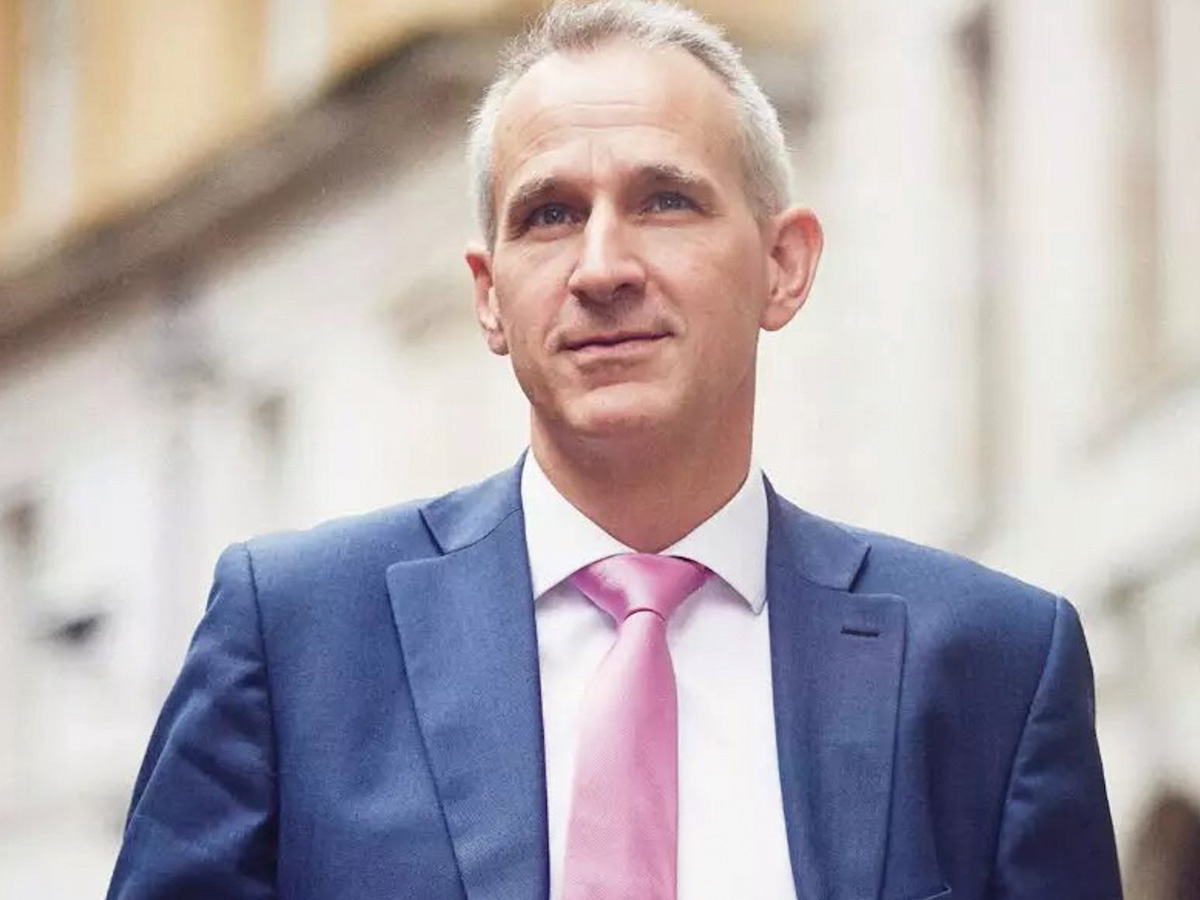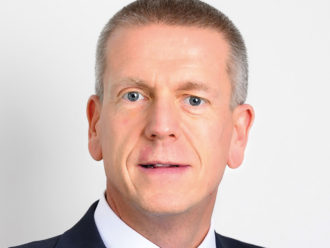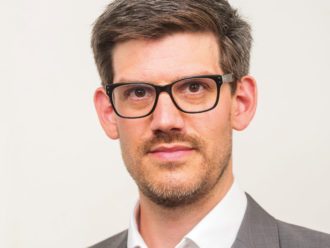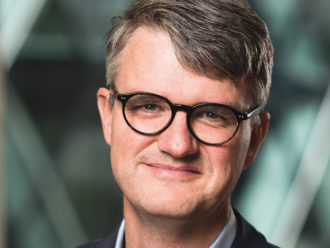Why is your portfolio dominated by cash, gilts, swaps and liquidity funds?
Our job is to meet the liabilities, which are linked to inflation and interest rates. We are a big pension fund, relative to the size of our sponsor, hence we have a small appetite for risk.
So, the first thing we do is hedge unrewarded risk. Therefore, two-thirds of our portfolio is in gilts and cash. Our liability-driven investments cover 90% of the sensitivity of the liabilities to interest rates and inflation.
You have small allocations to global equities, investment-grade credit, UK real estate, infrastructure, US residential property, syndicated loans and emerging market credit. What returns are you aiming for here?
It starts with our investment beliefs. We want to maximize our diversification and are strong believers in beta rather than alpha. So, we want exposure to as many rewarded risks as possible.
We do not see evidence of there being much alpha and do not believe we are smart enough to find it the whole time. So, we prefer to buy beta. It is lower risk and offers a more stable return.
How successful has this approach been?
The markets have been kind. We have compounded at just over 10% per annum for more than 10 years, which has far exceeded our liabilities.
When we set this team up in 2010, we were 50% funded, discounting the liabilities, on a gilts at basis. We are now almost 100% and are eight years ahead of our target.
Looking back from the safety of today, was this a problem in 2011?
There was a huge problem. I took this job in 2010 and our parent company [RBS] had just been taken over by the government. Then a year later, we had the euro crisis.
The deficit of the pension fund was, at the time, a significant proportion of the capitalisation of the bank. We were running a position that was enormously long to equities and enormously short to interest rates, with little hedging in place. It was a very different position to where we are today.
That must have been challenging.
I sleep better today than I did back then. I went in thinking it would be a challenge but underestimated the size of that challenge.
Back in 2011, it was difficult to admit that you worked for RBS. It was a long and dificult turnaround. But, as I say, markets have been kind. My colleagues made some great calls, which meant we managed to get our hedging up, which was key, and our assets have delivered against that.
Why have you invested in net-zero retirement villages?
We have agreed to help finance the construction of 34 retirement villages across the UK in a joint venture with Legal & General. Such villages are proven to be a healthier and, for those who chose them, a more enjoyable way for people aged over 65 to live. These are also net-zero properties, so they have good green credentials.
This was about pivoting our property portfolio. We sold £100m of offices to finance these villages. So, our property portfolio is not full of UK commercial assets. We have, for example, 2,500 US family rental homes, which we bought in the early 2010s.
We would prefer to own retirement villages and US family homes over offices or retail assets, where we do not see an attractive future return. The way we use land as a society is changing and this means we are investing in the future.
How much is the total investment in these retirement villages?
It is £130m today. As we build out these 34 villages, we could easily end up investing £500m in this portfolio.
This appears to be an impact investment focusing on the “E” and the “S” of ESG. Was that deliberate?
We prefer to invest in assets that are beneficial to society. Looking at the forests that we own, the wind farms that we bought in 2014, the greenhouse that we built in Cambridgeshire – which reduces food miles – they were all bought because they are good in investment terms.
Aside from this, they are beneficial for society and help reduce carbon emissions, but we would not buy them if we could not get the investment returns.
That seems a realistic approach to ESG: the returns come first, but ESG underpins much of it.
Absolutely. It should underpin the quality of the asset. Buying real assets benefits society in terms of reducing the carbon footprint among other things. It is a better way to deal with the carbon emergency, rather than reducing carbon intensity in a quoted-equity portfolio, which we think is a dubious measure.
Do you have further projects like this in the pipeline?
We are currently building a waste-to-energy plant, which will convert waste that cannot be recycled into an energy input for cement kilns. When that is finished, we will be fully invested. We will have hit peak assets, so we have nothing else planned because we are going to have cash outflows for the next 30 years, so we will need to sell assets to nance this.
How important will ESG be in your investment approach going forward?
ESG has always been, and will continue to be, integrated into everything we do. Our ESG strategy is to engage our equity, ditch our debt and get active in alternatives. What this means is making sure the equities we own are signed up to net zero.
We do this through engagement and collaboration with our peers and fund managers. A lot of people are focusing on the carbon intensity of an equity portfolio; we do not think that this is the most constructive measure. For example, most mining companies have been selling their coal assets.
So, if I vote in favour of Anglo American selling its coal assets, then my carbon footprint has gone down. Now, those coal assets are sold to an entity that decides to mine more coal because that is now its only source of profit.
So, I have reduced the carbon intensity of my equity portfolio, yet the amount of carbon emitted in the real world has gone up. This is why people need to be careful. It is a complex subject and what we need to do is to engage with our companies to sign up to net zero and make their operations aligned to science-based targets.
We do not want to fund the debt of companies that are not aligned to our net zero objectives. In 2019, we removed investment grade oil and gas debt from our portfolios. We have more than 400 companies on our restricted securities list.
We are also active in alternatives, by getting out into the real world and making sure we buy assets that are part of the transition and engage in good governance. This often means having board seats to move this in the right direction.
Of course, the recent tragic invasion of Ukraine reminds us that governance is the most important letter in ESG. Bad governance can result in the total loss of an asset or, in this case, a market.
Do you think, therefore, that ESG reporting is wrong?
A lot of energy is wasted on worrying about a portfolio’s carbon exposure. People need to be careful that when the Task Force on Climate-Related Financial Disclosures reporting comes out that they do not just take a knee-jerk reaction and say: “This is a high carbon intensity portfolio, and this is a low carbon intensity portfolio.” That does not tell you whether someone is doing a good job of managing risk or whether they are doing a good job of transitioning to a low carbon economy.
So, it is down to how you measure the data?
Yes. Like most things in life, it is quite complicated. A question to ask is: how is what you are doing a ecting the real world? Equity per se does not release carbon, a company releases carbon.
Where do you see future investment opportunities?
Well, as I say, we try to create a diversified approach to lots of different sources of beta. We harvest as many as we can. There are plenty of opportunities. One example is timber. There are various reasons why timber demand will increase. You can turn timber into a carbon sink and take carbon credits, which is appealing. We have just done that with one of our forests.
Alternatively, if you are going to reduce plastic in packaging, paper is going to be a key replacement product. Timber may also become more prominent in construction as cement and steel are reduced.
So, demand for timber and timber products increases but it takes 25 to 30 years to grow a tree, so that is limiting supply. Then there is Russia being a big exporter. So, it strikes me that timber may be quite an attractive asset for the next five to 10 years.
Why do you use and promote the Cost Transparency Initiative?
Try compounding your return at 50-basis points less over 30 years. It makes a huge impact on outcomes. The initiative is important because there is not enough transparency and visibility in financial markets. There is far too much agency in the finance sector taking a piece of everyone’s savings and not necessarily adding value in the way that they should be.
You are the scheme’s chief executive and co-chief investment officer. Does that raise any governance issues?
It could, but we are fortunate in that the alumni of NatWest produces a wonderful array of potential trustees for us. For example, our member appointed trustees include a chief executive of a Swiss pension fund and an ex-senior executive from the Pension Protection Fund and Smart Pensions.
We have a high-quality trustee board, including independent trustees, who hold us to account and deal with any conflicts that may arise. We are lucky in having such a strong trustee body.
Will the invasion of Ukraine result in you adjusting your portfolio?
What is happening in Ukraine is clearly a tragedy. We put a ban on purchasing any Russian investments on day one of the invasion. Russia and Ukraine are low single figure basis points of exposure in our portfolio, so not material in asset terms.
The portfolio benefits from high power prices, because we have quite a lot of energy exposure, so we may lock in some of the higher power price through our hedging.
It reminds you that the ‘G’ in ESG is important. There will be knock-on effects that are just emerging, including supply chain problems, food inflation and an increase spend on defence.
What is your outlook for the investment?
I have learnt not to try to predict what the investment environment is going to be. Our job is to maximize our chances of paying our liabilities and make sure that we are ready for whatever the environment turns out to be.
What have been the biggest challenges you have faced in your role?
Balancing how much risk we could afford to take versus how much risk we needed to take to fill the significant funding gap without damaging the covenant of the sponsor.
In the early 2010s, where you had a whole load of problems for the sponsor, such as conduct fines and the sponsor not making a profit for a number of years and then ring fencing – getting through all that were the biggest challenges. We got through them. Markets have been kind.
What are the biggest lessons you have learned during your career?
The biggest lesson is to realise that your job is to pay a liability. 200,000 people are relying on the fund for their pension. Therefore, success is measured on the probability of all your liabilities being paid with the assets you have, not maximizing asset returns.
When I started as a chief investment officer at an asset owner, I thought my job was to make high investment returns. There is a difference. So, it is about measuring assets versus liabilities, not just asset returns. That changes how you behave.
The other thing is that collateral and liquidity are everything. In times like now, your ability to act is directly proportionate to the collateral and liquidity that you hold enabling you to take advantage of opportunities when they come.
The most important lesson though is to employ and work with good people, have open transparent debate, welcome con- icting opinions and be willing to act when you reach a decision.
ROBERT WAUGH CV
2010-present: NatWest Group Pension Fund, CEO and Co-CIO
2003-2010: Scottish Widows Investment Partnership, Head of UK equities, responsible for £15bn of assets
2001-2003: Edinburgh Fund Managers, Head of UK equities
1986-2001: Phillips & Drew (Now, UBS Asset Management),UK equity fund manager





Comments